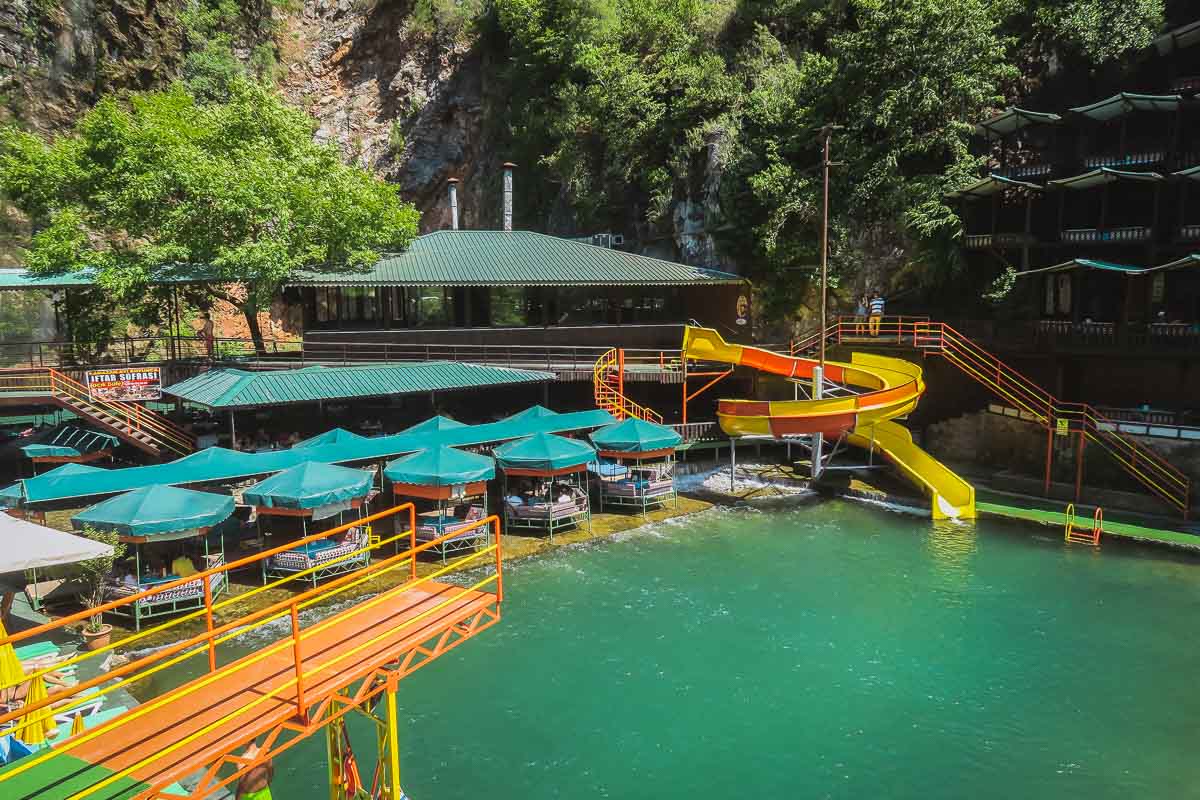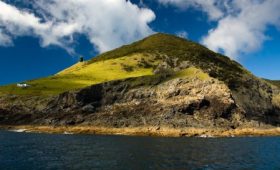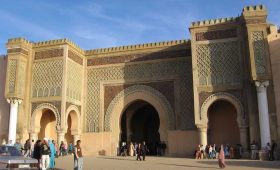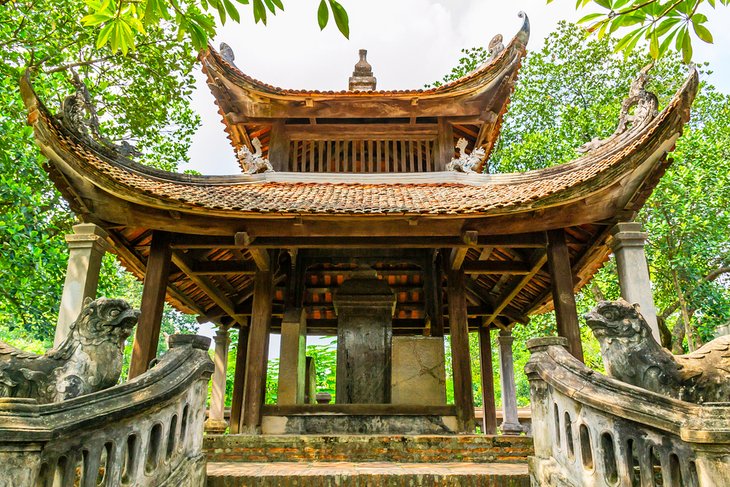Best rated Kemer attractions and vacation guides: If you’re staying in Antalya, the Perge, Aspendos, Side Kemer tour offers an excellent way to tick off the highlights of this area’s sights all in one day, including Side Belek’s Temples of Apollo and Athena. This full-day tour includes a guided visit to some of the surrounding region’s major tourist attractions. As well as a stop in Side Kemer, it includes visits to Aspendos, to see Turkey’s famous mammoth Roman theater, and the ruins of Perge. It includes lunch, and transport, with pickup and drop-off from your hotel. Side Kemer’s huge theater was the largest in ancient Pamphylia and could accommodate an audience of 15,000 in its 49 rows of seating. Although several of the supporting arches have collapsed, bringing down part of the auditorium, this is still a remarkable surviving example of Roman architectural skill. Don’t miss having a closer examination of the stage walls, where there are well-preserved reliefs. Just behind the theater are the rambling ruins of the agora (Roman-era marketplace), which originally would have been surrounded by colonnades filled with shops. BeSide Belek the agora are the remnants of the circular Temple of Tyche (dedicated to the Roman goddess of fortune). Find extra details on Side excursions.
Laodicea is located right across the ancient city of Hierapolis. It was once a trade city which was known with glossy black wool and eye salve trade. Mentioned in the Book of Revelation as the luke warm city. Recently Turkish archaeologists excavated a church dating to the time of Constantine. This is thought to be one of the earliest churches of the world. This site is recommended for biblical history lovers. Aphrodisias is 3 hours drive from Kusadasi town. Aphrodisias is derived from the goddess named as Aphrodite, the goddess of love. An artisan city known with sculpturors who made sculptures and sarcaphaguses with the local white marble. You can see the best examples of marble works in this city. The site has the most well preserved ancient stadium in the world which has a capacity of 30.000 people. The huge pool at the south agora is breathtaking.
Silk Worm Cocoon in the Culture House in Alanya in Turkey: This structure serves as Alanya Municipality Culture and Social Affairs Department and the Alanya Castle Site Management Office. It’s also known as Hamamlı Ev (Bath House) due to the historical bath on the ground floor. This traditional Alanya house was built with quarry stone and a lathing wood system. It used grog and haired plaster, specific to the region in the early 20th century. It was restored according to its original form after it was assigned to the Alanya Municipality by its owners.
Alanya is a very popular resort town on the Turkish Riviera. The town is 120 km from the center of Antalya and has its own airport. Well known for its beautiful beaches, resorts, nightlife, and nature, Alanya welcomes millions of visitors from all over the world every year. To help you get maximum enjoyment from the city, we have prepared this guide to the best things to do in Alanya. The iconic Red Tower, where you can see traces of Seljuk Architecture, has been the symbol of Alanya for centuries. It’s located in the historical city center, right near the Seljuk Shipyard (Tersane). The octagonal building was built in the 13th century by Seljuk Sultan, Alaeddin Keykubad. When you look around from the top floor of the tower, the view encompasses the walls, towers and the harbor that surround the peninsula.
The bathhouse was built by Skolastika, a wealthy Roman woman living in Ephesus, and therefore the bath complex is mostly known as the Skolastika bath. Another name for this bath complex is Varius Bath. It consists of 4 main sections: Calderium (hot water room), Tepidarium (warm water room), frigidarium (cold water room) and apodyterium (dressing room), which we are used to seeing in all ancient baths.The bath is heated by a central heating system and the bath has a capacity of one thousand people. The use of the baths is free and consists of 3 floors. Baths in antiquity are also known as places where people can socialize and establish good friendships because they were used not only for cleaning but also for socializing and having fun. Among the surviving remains of the bath complex, only the ground floor is suitable for sightseeing.
Alanya is also within day-tripping distance of some of this Mediterranean region’s most well-known ancient sites and tourist attractions, so if you want to brush off the sand for the day and head out to explore, there is plenty to keep you occupied off the beach. As well as the places mentioned on this list, you can easily also make day trips to Antalya to visit its museum and stroll its old town district, Aspendos (Turkey’s most famous Roman Theater), and other major archaeological sites near Antalya such as Perge. Read even more details at https://www.tourmoni.com/.
Alanya’s emblem is a 13th-century Seljuk defensive tower, getting its name from the red brick that makes up the structure’s upper storey and parapet. The Red Tower has an octagonal footprint and climbs to 33 metres with marble blocks on its lower walls. This rare piece of Medieval defensive architecture was constructed to protect Alanya’s harbour and shipyard, and greeted people’s arrival to the city for many centuries. There’s a cistern inside, still able to collect rainwater, and you can make out the historic siege-repelling murder holes, through which boiling water and pitch would be dropped on helpless invaders. On the first floor is a small ethnographic museum with tools and handicrafts reflecting the Turkmen culture in the Taurus Mountains.
Oluk Bridge, Köprülü Canyon: Köprülü Canyon National Park is about 120 kilometers to the north of Alanya. It’s primarily known as one of the best places to visit in the region for rafting trips, which take place on the icy-blue river that winds through the canyon, but for more things to do, the area is also home to Roman ruins and plenty of hiking opportunities. Selge is the main Roman archaeological site in the area. The remnants of this once thriving city of 20,000 sit amid the lonely village of Altınkaya, 11 kilometers northwest of the canyon itself. The large Roman Theater, cut into the hillside and looming over the modern village houses, is well worth a visit here, despite the theater being partially destroyed. In the canyon itself, several tour companies run rafting trips along the Köprü River. The trips traverse the most scenic section of the river, heading under the Roman-built Oluk Bridge, which dates back to the 2nd century. The canyon is 14 kilometers long, with its walls soaring up to 400 meters high in places.
Alanya’s port for tourist cruises and diving excursions is defended to the south by Kızılkule, and is as good a place as any to potter around and see where your curiosity takes you. Along the water there’s a promenade, hemmed by gardens with palms, lawns and topiaries. There are lots of spaces to just park up and soak up the views out to sea, down to the castle or up to the Taurus Mountains, a constant, imposing presence all along the coast. You’ll never be far from a cafe for a hit of Turkish coffee, and for the best views you can walk along the harbour’s south arm to ponder Alanya and its mountainous hinterland. You may want to spend a whole day descending into the clear waters off Alanya. This experience is open to divers of all experience levels, and includes hotel pick-up and boat trips from the harbour to two dive sites, with a cooked lunch aboard the yacht on the way to the second site.



